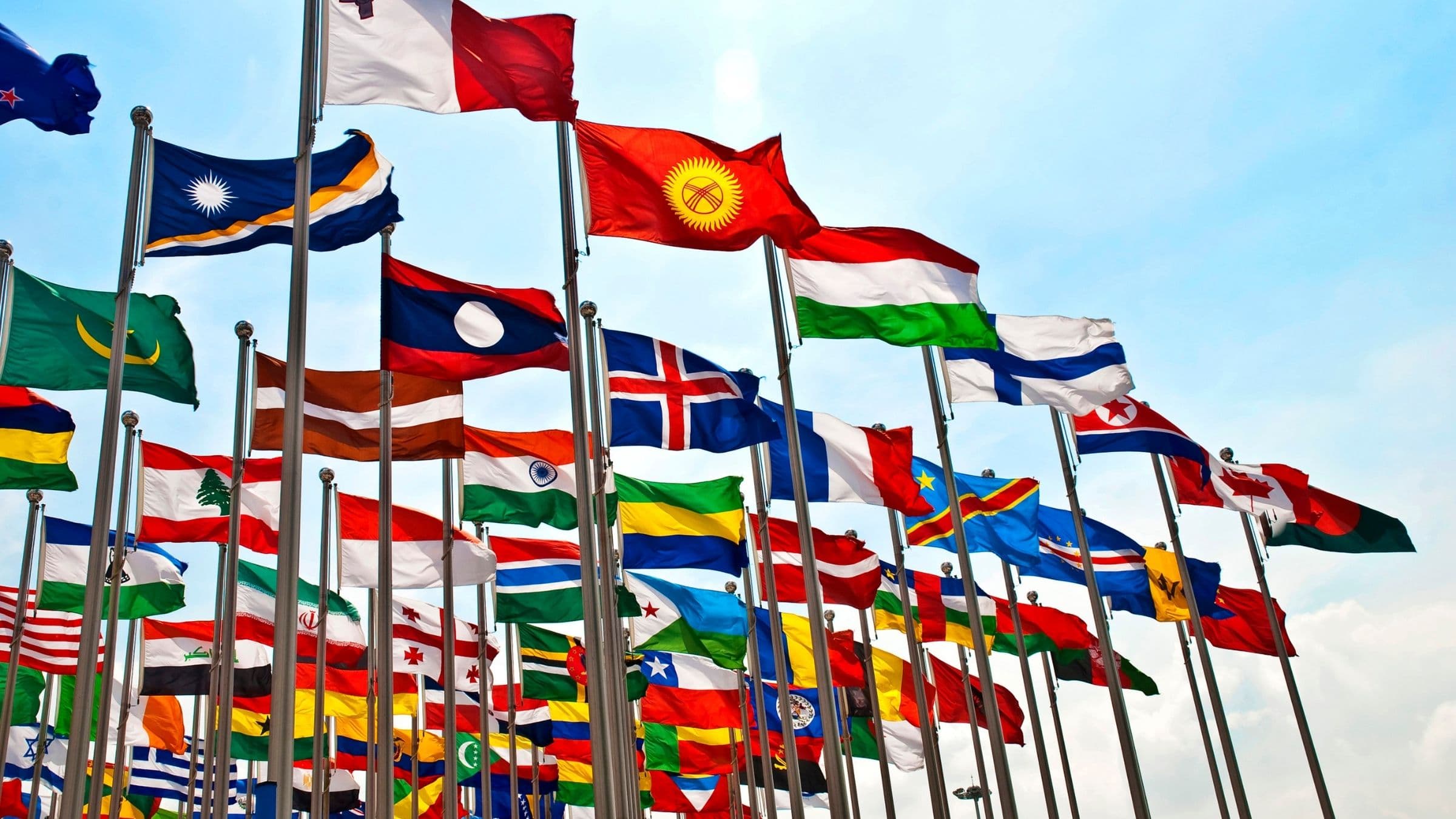
COUNTRY PROFILE
Discover more about the German market including overviews about the retail, foodservice, and food-processing sectors. Events, resources, and more are linked throughout the profile.

3rd
largest processed food export market from the U.S in Europe

$319.9 Million
total of U.S. processed foods imports in 2023

$810.8 Million
in consumer-oriented agricultural products from the U.S. in 2023
Focus Economics reports that Germany is the EU’s largest and most populous economy and the fourth largest globally by nominal gross domestic product (GDP). It plays a key role on the European Union stage, with Berlin often having a deciding sway over policy changes in the bloc. Germany was a founding member of the Euro area and has adopted the euro as its currency since the currency union’s creation in the early 2000s.
German economic growth is expected to undershoot the Euro area average in the coming years due to a comparatively poor demographic outlook, a reliance on external demand, and the country’s reliance on legacy industries such as combustion engine vehicle production. More positively, inflation will be mild and public debt is set to remain the lowest in the Group of 7 (G7) by some distance. Euromonitor reports that GDP growth was in recession in 2023 at -0.10%, and in 2024 growth will be timid but positive at only 0.2%.
The German economy faces several challenges, including an aging population, the need for digital transformation, and transitioning to more sustainable and environmentally friendly production methods. In particular, the shift to electric vehicles poses risks to the car industry. Moreover, the export-led growth model has been called into question in an era of rising trade tensions.
Germany’s population has been falling gently over time. In 2023, total population stood at 84.2 million (CIA World Factbook Est.), which is 2.7 million more than in 2000. The number should grow to 83.5 million in 2030. Germany also has one of the world’s oldest populations. The median age was 46.7 years in 2023. This was 6.6 years greater than the figure for 2000 and well above the regional average. In 2023 23.3% of the population was over 65 years, or about 19.6 million Germans. The growing number of older consumers is altering the pattern of consumption and pushing up healthcare costs.
USDA’s Office of Agricultural Affairs (OAA) in Berlin, hereinafter referred to as FAS Post Berlin, reports that Germany is by far the biggest market for food and beverages in the European Union. In 2022, Germany imported a record US$76.2 billion in consumer-oriented agricultural products. The majority of these imports originated from other EU member states. However, there is a trend toward imports from outside the EU. Imports of consumer-oriented agricultural products from the U.S. totaled US$810.8 million in 2023, consisting mostly of soybeans, tree nuts, fish and seafood, food preparations and ingredients, wine, spirits, condiments, sauces, and beef. Germany’s main trading partners of consumer oriented agricultural products are other EU countries followed by Turkey, Switzerland, China, Ireland, the U.S., the U.K., and Vietnam. In the past 10 years, food imports have steadily increased, underlying the rising demand for foreign and “exotic” foods.
Germany is currently the third largest processed food export market from the U.S. in Europe. U.S. exports of processed food products to Germany grew 5% in 2022 to a total of US$366.4 million. In 2023 exports dropped 13% to US$319.9 million. That equates to a loss of US$46.5 million which adds to the U.S. trade deficit in food and agricultural products.
Top U.S. processed foods exported to Germany in 2023 included:

$128.7 Million
estimated total of retail sales of packaged food products in 2023

27.6%
increase in retail sales since 2019

$145 Billion
estimated in sales of packaged food products by 2028
According to Euromonitor, retail sales in the packaged food market in Germany had been estimated at US$128.7 billion in 2023. That represents growth of 27.6% and US$27.8 billion since 2019. Germany is the fourth largest packaged food market in the world. By the year 2028, the retail sales in the packaged food market in Germany is expected to reach nearly US$145 billion, growth of 10.9% or US$14.2 billion from 2024.
High growth categories in the forecast include:
FAS Post Berlin reports that Germany is an attractive and cost-efficient location in the center of the EU. While many consumers are very price sensitive, the market also has many wealthy consumers who follow value-for-money concepts. These consumers are looking for premium quality products and are willing to pay a higher price. In 2021, German citizens spent only 15.3% of their income on food and beverage products.
Whereas Germans could rely on relatively cheap groceries, the war in Ukraine raised prices for energy, feed, and fertilizer. Inflation reached two-digit numbers with increasing food prices being one of the main drivers besides energy. From April 2022 to April 2023, food prices increased by 17.2% across all food categories (as a comparison, between 2000 and 2019 the rate was below 1.5%). Therefore, many German consumers have cut back spending even on essential products.
Consolidation, market saturation, strong competition, and low prices are key characteristics of the German retail food market. The top four grocers, Edeka-Group, Rewe-Group, Schwarz-Group, and Aldi-Group, account for around 76% of the total market. The German market is largely dominated by domestic players. This is particularly true for hypermarkets, supermarkets, and discounters. German consumers are very particular about what they like and what they do not like in their grocery retailers, and grocery retailers can count on a strong base of loyal customers. The failure of Walmart to establish itself in Germany over a decade ago shows how hard it is for international players to successfully enter the German market.
Large grocery retailers in Germany are mainly driven by competition between each other. They are very well-established and compete mostly on price, outlet networks, and consumer trust, which, amongst other factors, require them to maintain their standards in terms of quality. Retailers also try to differentiate themselves through additional services and standards which add value to their original value proposition.
The growth of discounters is slowing because of market saturation and the continuing trend towards shopping at supermarkets in convenient city locations. As urbanization is growing and consumers’ lifestyles are changing, more and more people seek convenience when doing their grocery shopping. To counter this, discounters are also attempting to adapt and expand in hopes of differentiation. Additionally, they are focusing more on quality and choice rather than price with new concepts and the introduction of more premium and convenience foods.
The main competitors for U.S. suppliers include domestic producers and producers from other EU member states, such as the Netherlands, Italy, Poland, France, and Belgium. However, for dried fruits and nuts the main competitors are Turkey (hazelnuts and raisins), Chile (dried prunes), South Africa (raisins), and Canada (cranberries). The U.S. industry’s advantages include a good reputation for consistent quality and stable supply. The main advantages of competitors are proximity and price.
FAS Post Berlin reports that U.S. products in the market that have good sales potential include: Nuts: Almonds, hazelnuts, cashews, walnuts, pistachios, macadamia nuts; Fish and Seafood: Pollock, salmon, shrimp and prawns, surimi, miscellaneous fish products; Dried and Processed Fruits: Prunes, apricots, raisins, cranberries; Beef and Game: Hormone-free beef, bison meat, exotic meat, and processed meat products; Soup and Other Food Preparations; Organic products.

$87.8 Billion
total foodservice sales in 2022

12th
U.S. ranked 12th in exports of consumer-oriented agricultural products

$33.4 Billion
total hotel sales in 2022
FAS Post Berlin reports that the German hotel, restaurant and institutional (HRI) foodservice sector is large and highly fragmented but can be divided into the commercial and institutional foodservice markets. The German commercial foodservice market includes hotels, restaurants, fast food and take-away outlets, bars, cafeterias, coffee shops, and similar channels. The institutional foodservice market consists of hospitals, universities, nursing homes, and cafeterias.
In comparison to 2021, German foodservice sales increased by 15.5% to US$87.8 billion in 2022 (US$76 billion in 2021). The growth was minus 6% in the year prior. The HRI sector is one of the sectors of Germany’s economy that was hardest hit by the COVID-19 pandemic. Germany loosened its pandemic control restrictions in February 2022, and lifted all restrictions in May 2022. This led to the recovery of the sector and an overall increase in sales and revenue. However, revenue is still 4.6% below what it was in 2019.
Despite this recovery, consumer spending in the HRI sector has been impacted by yet another crisis, the war in Ukraine. Following Russia’s invasion of Ukraine in February 2022, the entire sector suffered from a surge in energy prices as well as rising costs for raw materials and personnel. As a result, the German government extended the reduced value added tax (VAT) rate of 7% on food consumed in restaurants that was originally introduced as a COVID-19 relief measure. In December 2023, Germany announced a return to the standard VAT rate of 19% for restaurant and catering services, effective January 1, 2024.
Purchasing by hotels, restaurants, and institutions is fragmented and competitive. Few of these businesses import products directly from other countries, except for items that they purchase in large quantities. Most HRI companies would rather purchase from central buyers/distributors importing food and beverages. In general, these wholesalers specialize in products or product groups. Some are even experts in food products from a specific country of origin. Specialized importers have an in-depth knowledge of import requirements, such as product certification, labeling, and packaging.
They also typically handle shipping, customs clearance, warehousing, and distribution of products within the country. The two major distribution channels for the German food service trade are “cash and carry” wholesalers and specialized distributors/wholesalers. “Cash and carry” wholesalers operate large stores with food and non-food products. They sell to retailers, restaurants, and other foodservice operators. Cash and carry stores offer a variety of products at competitive prices and are not open to the average consumer.
The German foodservice sector is highly fragmented and dominated by full-service restaurants, totaling US$53.6 billion in 2022. Quick service restaurants and cloud kitchens experienced slight growth in 2022. In total, the top five companies only occupy 2.1% of the market share. International chains like McDonald’s, Burger King, and Yum! Restaurants (KFC, Pizza Hut) have a very strong position in the market.
Hotel sales increased from US$24.2 billion in 2021 to US$33.4 billion in 2022, reaching pre-pandemic levels. The COVID-19 pandemic has increased the trend for regional tourism. Institutions are the smallest sector in foodservice, with sales of US$3.3 billion in 2022. Most of the institutional foodservice market is covered by caterers, of which Compass, Aramark, Sodexo, Klüh, and apetito are among the largest in Germany. They usually cater to in-house company restaurants, hospitals, retirement homes, schools, and universities.
Trade within the EU-27 bloc is significantly easier for Germany than trading outside the bloc, so it comes as no surprise that the top exporters of most products to Germany are typically other European countries. The U.S. ranked 12th of all countries in exports of consumer-oriented agricultural products to Germany in 2022, but when accounting for the single market EU-27, the U.S. is a much larger source for imported customer-oriented products. Therefore, the biggest competition for German market share is with Switzerland, Turkey, and China, which exported slightly more to Germany last year, and the United Kingdom, Vietnam, Thailand, and Brazil, who exported less than the U.S.
FAS Post Berlin reports that U.S. food products with good potential for increased sales in this sector include tree nuts, hops, sweet potatoes, pulses, fish and seafood and whisky. Products not present in significant quantities but which have good sales potential include high-quality beef, cranberries and cranberry products, innovative sauces, condiments, and confectionery products, products featuring “sustainable” or other social issue-based marketing labels.

$20.7 Billion
total sales across all sectors in 2022

6,300
food processing companies in Germany

4th
food processing sector is the 4th largest sector in Germany
FAS Post Berlin reports that the food processing is the fourth largest industry in Germany. According to the Federation of German Food and Drink Industries’ (BEV) estimates, total revenue of US$20.7 billion were generated across all sectors in 2022, which is 17.9% higher than the previous year. However, the German food industry continues to struggle with subdued private consumer spending, results of COVID-19 related measures, inflation, and rising production costs. The future look is mixed. The following products have good sales potential on the German market: nuts, organic products, fish and seafood, highly processed ingredients, dried fruits, ready meals, bakery products, and pulses.
In 2022, the German food processing industry employed around 610,000 people in 6,300 companies. The sector is dominated by small- and medium-sized companies; 90% of which have less than 250 employees. In 2022, the sector generated a turnover of roughly US$239 billion, accounting for 5.8% of the German GDP. The largest subsectors by value were meat (22%), dairy (17%), bakery (9%), confectionary (8%) and pet food (7%).
Germany’s food processing industry is well developed and has access to all food ingredients. Generally, German food processors source their ingredients from local producers or local importers. Only large processors import ingredients directly from foreign suppliers.
Sector trends include that food product portfolios are becoming more specialized and complex. The share of convenience and ready-to-eat products as well as smaller packaging sizes is increasing while the share of milk and dairy products, alcoholic beverages, and sugar is declining. To-go products and snacks are also on the rise. Every third German consumer no longer has breakfast at home, and every second person is not eating lunch at home. Snacks and ready-to-eat products are thus becoming everyday companions. In Germany, sales of on-the-go products are significantly higher as compared to other EU countries. Since 2018, market share of snacks and on-the-go products rose by 11% in Germany.
FAS Post Berlin reports that U.S. products in the market that have good sales potential include: nuts: almonds, walnuts, pistachios, hazelnuts, pecans; highly processed ingredients (dextrins, peptones, enzymes, lecithin and protein concentrates); fish and seafood: salmon, surimi, roe and urchin, misc. fish products; dried and processed fruits: raisins, prunes, cranberries; fruit juice concentrates: cranberry, grapefruit, prune; beef and game: hormone-free beef, bison meat, exotic meat and processed meat products; organic products; products featuring “sustainable” or other social issue-based marketing label.
